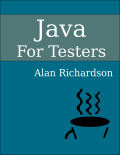TLDR; Write your CV as benefits, and build a portfolio, to become more than just another CV on the pile and help the busy CV reader see the value that you can bring to their team.

I’m trimming out an email backlog and came across a few “I can’t get a job - please review my CV and tell me what I’m doing wrong!” emails.
I’ve collated and distilled the advice I tend to give out, to help me trim out my email and an attempt to cut down on the number of CV’s I’m sent with people asking for “help” - although agencies and companies I’ll happily consult with you, for suitable remuneration, to help you solve your CV and recruitment issues.
Some of this may have appeared on this blog before. And if you’ve asked for my advice before don’t be alarmed. I have generalized and anonymised any personal details.
Your CV is a sales pitch
Your CV is an initial sales pitch. And the easy thing to learn from sales is “concentrate on benefits not features”, but its hard to put into practice. Particularly when CVs are involved.
- Most CVs are lists of features
- my name is
- i live at
- I have been trained in A (on this date), B (on this date), C (on this date)
- from time X to time Y
- I worked here
- my job title was Z
- i did X
- i went to school, here are my grades
- i went to university, here is my final grade
- i like to read books and walk in the park and do other stuff too, here is a list
I look at my CV and the second page is pretty much like this too, so I don’t fully take my own advice.
Because it’s hard.
Why does it benefit the reader, your future employer, that you were “trained in A”, did you use that information? Did you build on that skill? What did you achieve with that skill? How will it transfer to my environment? Do you even remember it?
I think this is the hardest thing to do, but please try.
Make the early part of your CV a sales pitch, so read sales books, advertising copy books, and tweak and edit mercilessly.
Once you’ve sold the benefits, show them the product
We can’t wait till an interview to show the product (which is us, by the way, the person who writes the CV).
We want to show them the product early so that, either:
- they want to interview us and are excited by our profile
- they don’t want to interview and know that we are not for them
We only want to work with people that we are a good fit for, so we need to have a way of filtering out those environments that are not a good fit for us.
“But I put my interests on the bottom of the CV”
Yeah, I assume you can read. And I don’t care if you like to walk in the park. I want to know if you can actually do what you’ve said you can do. Assuming that you’ve already convinced me that I will benefit from you doing it.
Convince me with a (demo) portfolio of work.
- create a blog - blogger, wordpress, medium, whatever free blog host
- write up what you learned when you ‘did X’ and your ‘job title was Z’
- demonstrate as many benefits as possible
- if a benefit you will bring is ‘improving testing efficiency by coding adhoc custom automated tools’, then show me some code that does that on Github
- if a benefit is that you can create ‘robust automated execution of the system to continually check high priority functional flows succeed by using Selenium in Java’ then show me some code that does that on Github
- if a benefit is that you are ‘Trained in A and can knowledge share quickly with my co-workers’, then show me the evidence, and possibly slides that show your distilled knowledge
Release everything:
- your University project (here’s mine https://github.com/eviltester/jsp-diagrammer-cobol-interpreter)
- exercises from training courses
- random code you created when learning language X from Book Y
Releasing code to github also demonstrates, and builds, competence with version control systems. Using Travis can demonstrate, and build, an understanding of CI.
If you are nervous that the code you do outside work doesn’t reflect the quality of your code then:
- release it
- critique it in a blog post
“But all my work is commercially sensitive and belongs to my past employer”
Then do more work, at home, so you own it. Write code that represents the core parts of what you have learned.
“But I don’t have time”
Here’s some other advice from people:
Felix Feng
TJ Maher
- http://techbeacon.com/how-pass-coding-interview-automation-developer
- http://techbeacon.com/switching-careers-qa-manual-testing-automation-development
If you want it, you work for it.
And you probably already have worked for it.
I want you to make all the hard work that you’ve already done, and continue to do, impossible for the people reading your CV to ignore.
Because they will try to ignore it. Because they are busy. And the first excuse they have to drop your CV and move on to the next, they will take.
Rewrite your CV for the role
Why are CV’s short? Is it for the benefit of the reader?
No. It’s so we can update it and tailor it for each role. (and possibly for the benefit of the reader).
When you do this, you might find that some of your experience doesn’t fit the role. Particularly when you are just starting out.
Which means, for experience that is not related to the current role, rewrite to emphasise the overlap between the previous role, not just the task. This helps when you take a ‘benefit’ approach to writing your CV.
It is vital to rewrite your summary for each role. Particularly if you have an “I am looking for a role where I can…” section, you better make sure that what you’ve stated you want, is actually on offer, otherwise the reviewer won’t move beyond that.
What about Linkedin?
Use Linkedin as a supplement for your CV.
- Your CV can concentrate on the benefits and the evidence since it only has a short amount of space.
- Linkedin can describe the features - where you worked, and what you did.
- Linkedin can also support your evidence with slideshare integration and ‘publications’ and ‘projects’
- Use the summary on Linkedin as your sales pitch.
- Remember to make your profile visible to public visitors, because people reviewing your CV probably aren’t connections yet.
We don’t have time to cover Linkedin profile summaries here, but feel free to have a look at mine and reverse engineer it to tweak yours:
A few tips we do have time for:
- sell in the summary
- use unicode characters (stars, ticks, circles, etc.) to format your title and summary
- have a decent/business photo
- write information about each role, flesh the profile out
Melanie Dodaro has good advice on using linkedin on her blog
Summary
- benefits not features
- provide links to evidence in a portfolio
- make every experience count by describing benefits
- supplement your benefit based CV with Linkedin
If you do a little extra work building a portfolio, then you can become more than just another CV on the pile. And you’ll help the busy CV reader see the value that you can bring to their team.
Best of luck.







